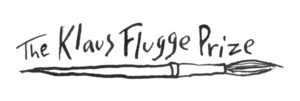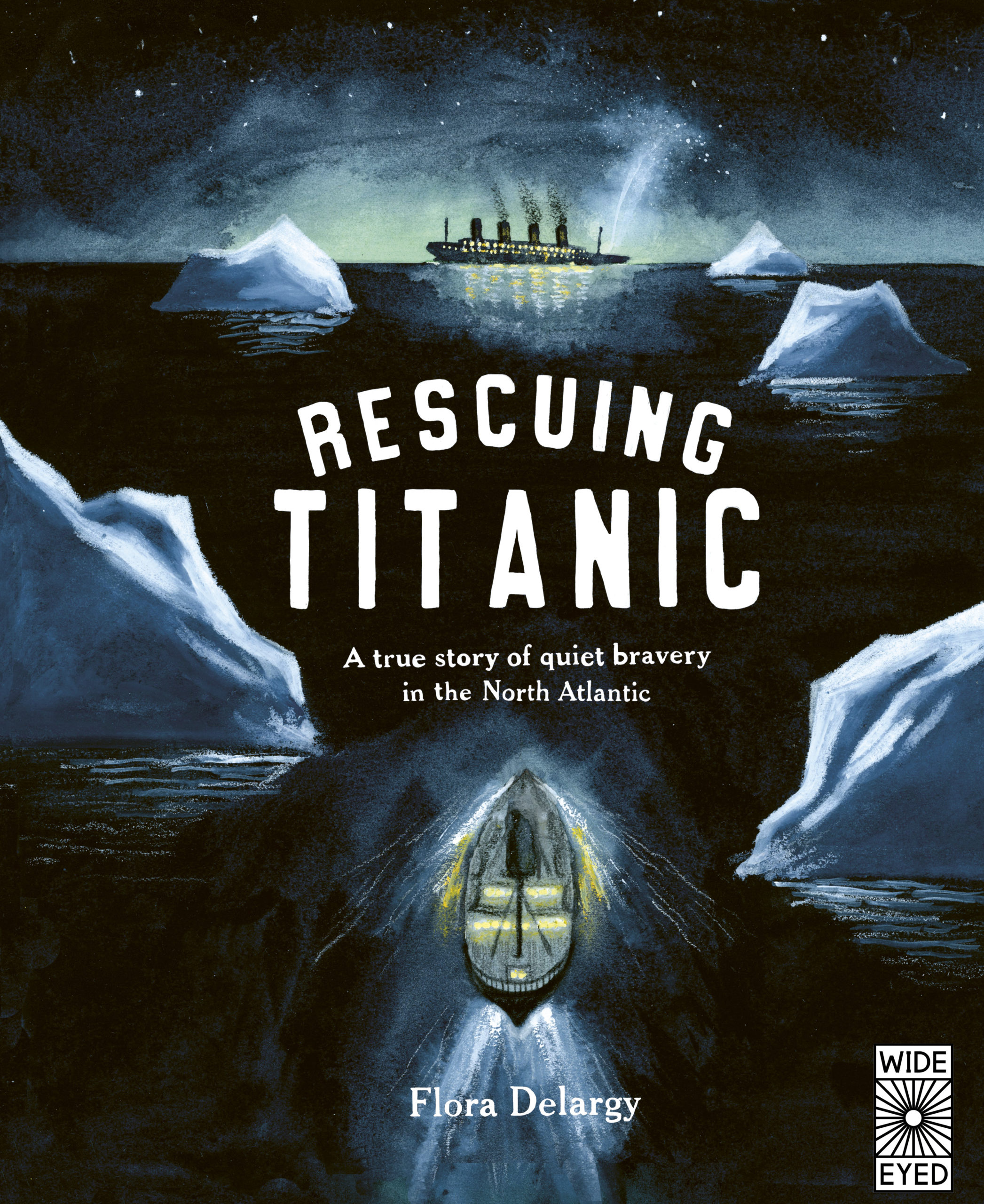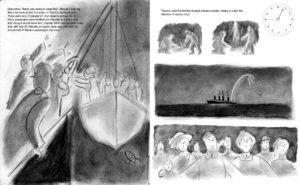

Rescuing Titanic, by Flora Delargy
Rescuing Titanic by Flora Delargy is one of the six books on the shortlist for the 2022 Klaus Flugge Prize.
The judges admired her use of colour and light and the way she fills the different scenes with life and movement, capturing the full drama of the events.
Former Klaus Flugge Prize judge, Senior Lecturer in Education: Primary English and Children's Literature, Mat Tobin interviewed Flora about her book.
Mat: There have been many stories about the Titanic so it was refreshing to have something different here, from a different perspective and presented as a factual narrative too. Can you give us an insight into how your project came to be and how you ended up working with Wide Eyed Editions/Quarto Kids?
Flora: It was exactly that lesser-known aspect that drew me to the story of the Carpathia. I was in the latter stages of the Children’s Book Illustration MA at the Cambridge School of Art and had been looking for a non-fiction topic to illustrate when I came across the story online. I was amazed at how little I knew about the Carpathia’s role in the rescue of the survivors, particularly having lived most of my life in Belfast where Titanic was built and is very much part of the fabric of the city. It was an ambitious task to try and tackle such an important historical event and I have to admit during the last months of the course I wondered if I’d bitten off more than I could chew! However the project slowly came together and I presented a 40 page dummy book at my degree show which is where Lucy Brownridge from Wide Eyed Editions came across it and offered me a contract. Working with Lucy and my art director Karissa Santos has been an incredibly enjoyable experience and I learnt so much from them. Lucy encouraged me to weave lots of factual information around the narrative and the research was such a fascinating part of the process.
Mat: Huge congratulations on already winning the Eilís Dillon Award at the Children’s Books Ireland Awards. I know that ‘Rescuing Titanic’ is very close to your heart for many reasons. Can you talk a little about growing up in Belfast and how the Irish landscape informs your work and creativity?
Flora: Thank you so much! I think we can’t help being influenced and inspired by the environment we live in and I believe this is why I am drawn towards depicting industrial scenes for instance. I also have a family connection with the Belfast shipyards as they are where both my grandad and great grandad spent their working lives. My grandad was a naval architect/engineer for Harland and Wolff and his dad was an iron turner for a rival shipbuilder called Workman Clark. It’s amazing to think my great grandad George would have seen the Titanic being built from just across the lough.
Mat: It’s lovely to see you work with physical materials like watercolour and ink. Can you tell us a little as to why you chose to use these materials over digital imaging software? Are there other materials that you enjoy working with?
Flora: Working with physical materials feels most natural to me. I find it cathartic to put pen to paper and set aside a few hours to experiment with materials – collage, paints, pencils, stencils etc – and see where my imagination will take me. The flip side though is that when working traditionally there is no ‘undo’ button and many pieces that I have laboured over for hours end up in the bin.
While I love working traditionally, I enjoy experimenting with monoprints and sometimes scan them into photoshop to manipulate digitally and this is something I’d like to explore further in my work.
Mat: From your initial ideas to the completed book, I can only imagine that a lot of planning and editing must have taken place. Can you talk us through your relationship with Lucy Brownridge and Karissa Santos and how they worked alongside you to help reach the incredible final draft?
Flora: Initially the task of writing and illustrating an 80 page book felt incredibly daunting but Lucy and Karissa were fantastic breaking down each stage and guiding me through the process. One of the first things we did was to plan the structure of the book on an excel spreadsheet, plotting a title and brief description of each spread. Lucy and I bounced this spreadsheet backwards and forwards with each other. The aim of this was to plan the flow of the book and figure out how and where the informational/inventory type spreads would sit alongside the purely narrative spreads. From there, the hard work really began with the research and various drafts of text! As painstaking and slow as the writing can be I also find it fascinating. Reading the transcripts from the British and American post-disaster inquiries were especially interesting and provided so many first-hand accounts from the crew and passengers of both the Titanic and Carpathia.
Once the text had been largely nailed down, Karissa and I began planning the thumbnails and then the roughs. I’ve learnt so much from Karissa about book design and the process of how a book is made ready for printing – something I had absolutely no clue about before making this book!
Creating a book like this is very much a collaborative process and I’m very thankful to both Lucy and Karissa for their invaluable advice and support throughout.
Mat: It’s always interesting seeing a spread come to life from start to end and one of my favourites is the ‘Passengers’ scene near the start. From early sketches to finished product, could you talk us through the process?
Flora: I really enjoyed working on the passenger spread. Deciding which individuals to highlight was great fun. In the end I wanted to show a range of the types of people who were travelling on passenger ships like the Carpathia such as rich socialites and more middle-class travellers.
A version of this spread first appeared in my university dummy book and the artwork isn’t too drastically different from the final version in the book but the text provides little information about the people boarding the ship.
Lucy, Karissa and I decided that this spread would offer a good opportunity in which to include some personal details about the individuals who happened to be on board the Carpathia. I was keen to keep the same layout – a diagonally ascending row of passengers - but by dividing the spread into segments, I was able to create a distinct section for each pair of travellers and include illustrations of some of their personal items within each segment. By using a light watercolour wash, the sections do not overwhelm or detract from the overall composition.
Mat: It’s rare to have information texts nominated in the Klaus Flugge Prize so it’s brilliant to find books breaking the mould with regard to genre as well as style and form. What were you hoping the pictures would bring to the story that perhaps the words could not?
Flora: I feel very fortunate that Rescuing Titanic has been selected for the shortlist, particularly as a non-fiction book. The story of the Carpathia is so compelling and needed little in the way of embellishment. I wanted to do justice to the actions of Captain Rostron and his crew while also weaving plenty of fascinating information about ocean travel and navigation into the narrative. I really wanted to not just describe the likes of morse code communication and the crew’s navigational tools but to show them through pictures to help create a more immersive reading experience.
Mat: Were there any spreads that became a particular challenge when it came to matching words and pictures? Can you talk us through an example and what you learned from the experience?
Flora: Yes, definitely. The most challenging spreads for me were the more graphic novel style spreads. Both in terms of the artwork – the pacing, perspectives, how many panels to include, the shape and size of the panels etc – and also how the narration worked with the artwork. These spreads went through the most revisions and it was definitely a case of trial and error. I really tried to consider how each panel could be used to best communicate the action as it unfolded, whether it be the expectation and confusion of the Titanic’s passengers in the lounge as they waited with their life belts, or else the crew jumping into action once the iceberg had been spotted.
Mat: Are there any contemporary artists/illustrators whose work you admire so much that you think everyone should encounter them?
Flora: Yes, there are so many – probably too many to name! I’m drawn to illustrators whose work has a nostalgic, immersive quality and can evoke the feeling of the past. Laura Carlin, Beatrice Alemagna, Junko Nakamura, Isabelle Arsenault, Sydney Smith and Júlia Sardà - just to name a few - are very inspiring to me.
Mat: Can you share a little with us about what you’re currently working on and what we can look forward to reading from you in the future?
Flora: I am currently working with Lucy and Karissa on my follow up to Rescuing Titanic which is focused on the Klondike Gold Rush in Canada. I had a baby at the beginning of the year and have taken some time off from writing and illustrating but I’m easing myself slowly back into work. Although it’s another lesser known story, it’s a very different project to Rescuing Titanic and I’m enjoying working on it very much!
Rescuing Titanic is published by Wide Eyed Editions, 978-0711262768, £14.99 hbk

The Klaus Flugge Prize is funded personally by Klaus Flugge and run independently of Andersen Press.
Website maintenance & Copyright © 2024 Andersen Press. All Rights Reserved. Privacy & Cookie Policy.




